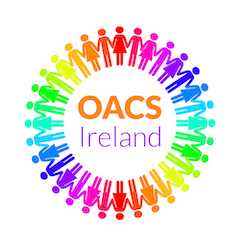IMPORTANT UPDATE via the MHRA
In January 2020, relevant healthcare professionals were sent by post or Alliance Tote boxes (for pharmacies) a letter and updated educational materials.
The MHRA Valproate guidance page has also been updated with the latest materials. https://www.gov.uk/drug-safety-update/valproate-epilim-depakote-pregnancy-prevention-programme-updated-educational-materials
A reminder of key facts about the risks of Epilim (valproate) in pregnancy
- 1 in 10 babies (10%) exposed to valproate in pregnancy are born with a congenital malformation – for the general population, the risk is about 2–3%1
- Folic acid supplementation may decrease the general risk of neural tube defects but there is evidence that it does not reduce the risk of birth defects associated with valproate exposure
- There is no “SAFE” dose of valproate that can be used in pregnancy – in a comparative study, all doses of valproate increased the risk of major congenital malformations2
- Around 3 to 4 in 10 children (30–40%) exposed to valproate in pregnancy have delays in their development such as talking and walking later, lower intellectual abilities, poor language skills (speaking and understanding), and memory problems3
- IQ in school-aged children (age 6 years old) with a history of valproate exposure in pregnancy was recorded to be on average 7–10 points lower than children exposed to other antiepileptic drugs 4
- Children with a history of valproate exposure in pregnancy have a 3-fold risk of autistic spectrum disorder and 5-fold risk of childhood autism compared with general population5
- Children exposed to valproate in pregnancy may be at increased risk of attention deficit/hyperactivity disorder (ADHD)6
NICE: updated clinical guidelines
To support the regulatory position that valproate should not be used in women and girls of childbearing potential (including young girls who are likely to need treatment into their childbearing years) unless other options are unsuitable and the pregnancy prevention programme is in place, in January 2020 the National Institute for Health and Care Excellence (NICE) amended their clinical guidelines for:
The Drug Safety Update, April 2019 links to additional clinical guidance to support healthcare professionals in understanding their clinical responsibilities for valproate.
Reminder of requirements
Valproate should not be used in girls and women of childbearing potential unless other treatments are ineffective or not tolerated, as judged by an experienced specialist. Valproate is contraindicated in girls and women of childbearing potential, unless the conditions of the valproate pregnancy prevention programme (‘prevent’) are met.
Children exposed to valproate in-utero are at high risk of serious developmental disorders (in 30–40% of cases) and of congenital malformations (in approximately 10% of cases). There is no safe dose of valproate that can be used in pregnancy (see Key facts about the risks of valproate in pregnancy).
Evidence from patient surveys suggest that there are still gaps in the implementation of the pregnancy prevention programme, for example women of childbearing potential on valproate medicines who have not been asked to sign the Annual Risk Acknowledgement Form. All girls and women of childbearing potential using valproate medicines should be reviewed at least annually to ensure that the conditions are met.

Great content! Super high-quality! Keep it up! 🙂
I benefit from checking your site. Thanks a ton!